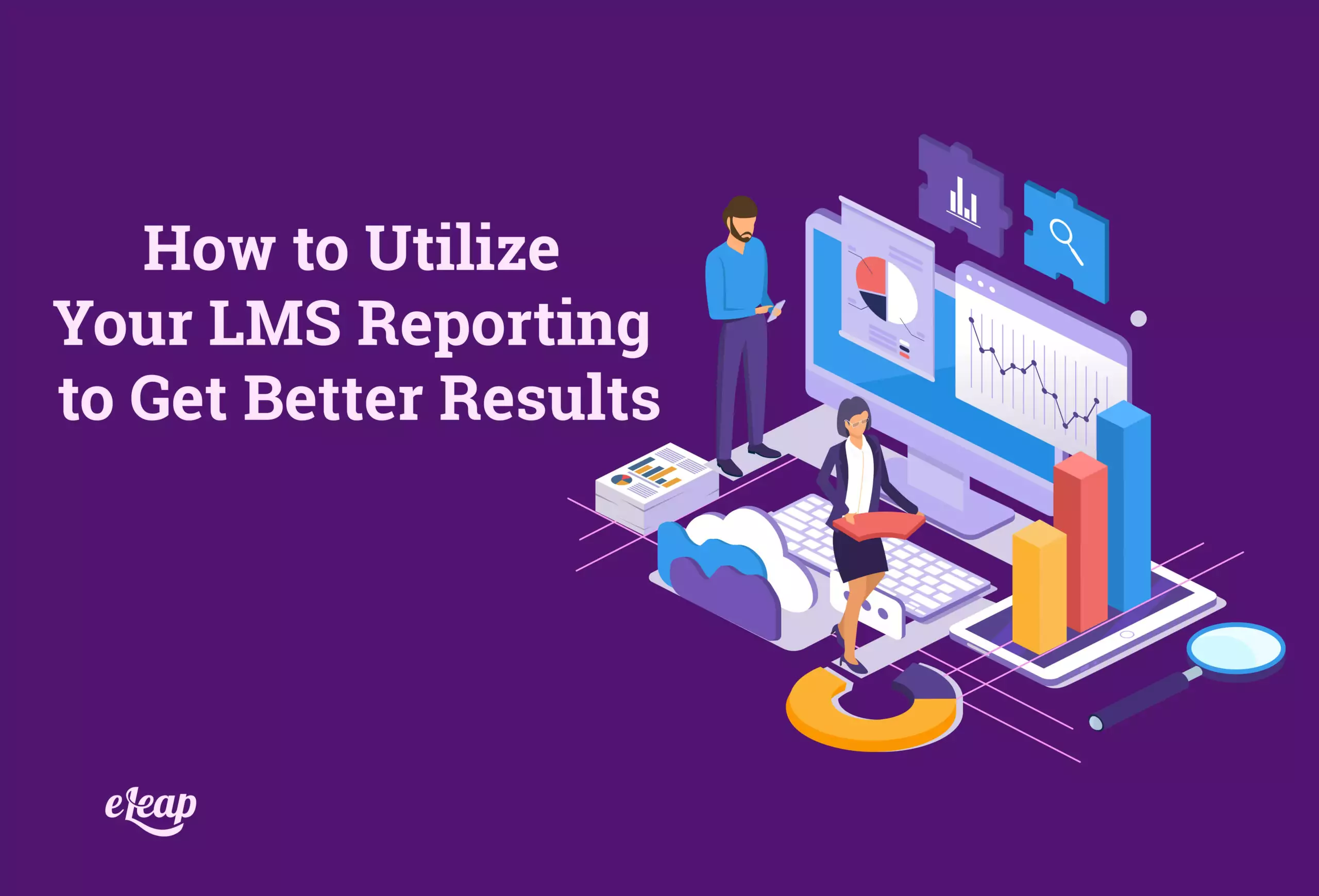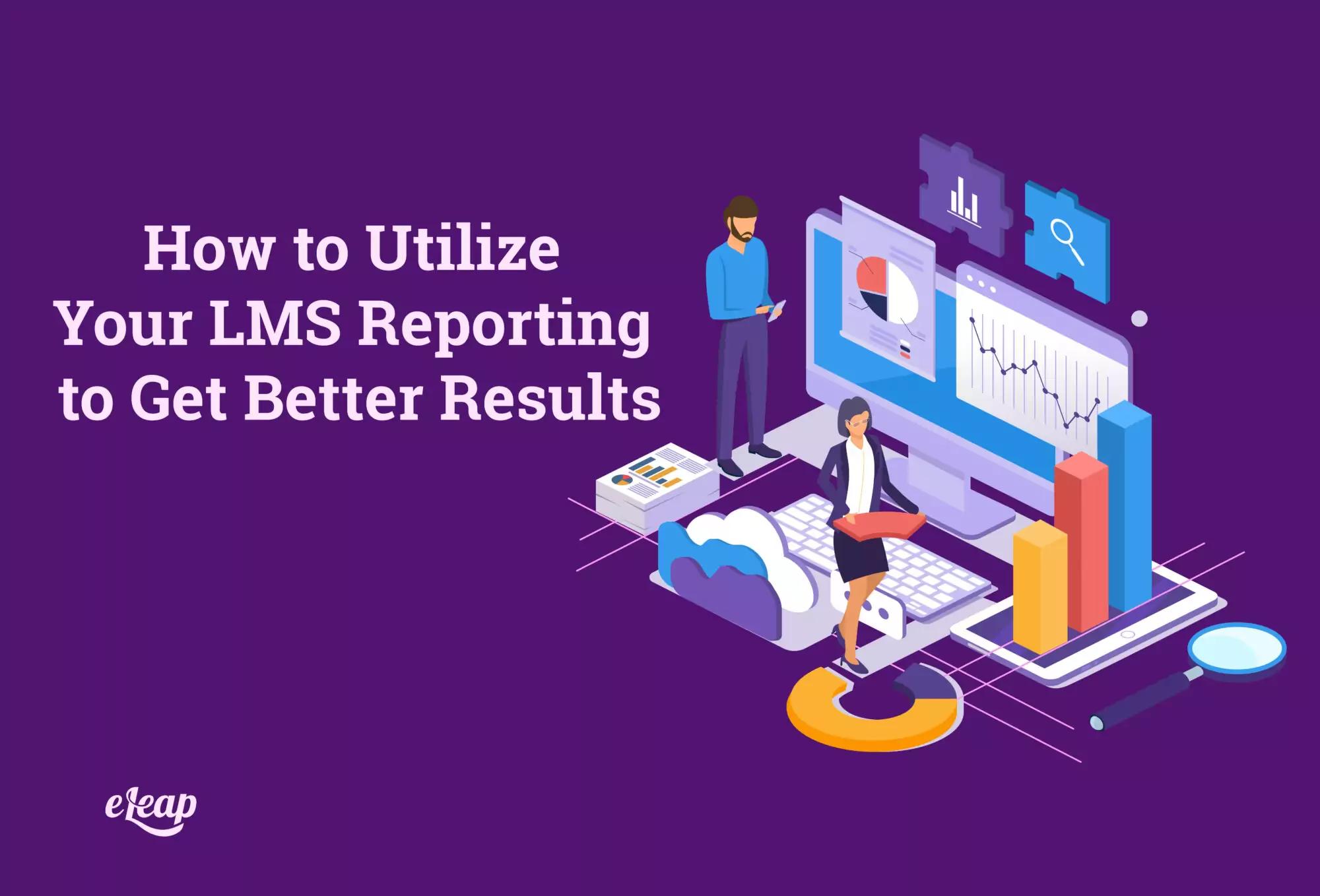How to Utilize Your LMS Reporting to Get Better Results

Learning management systems are an absolutely critical component of good training within an organization. And everything starts with training, as it is the foundation upon which your organization can grow. While learning management systems provide a myriad of beneficial functions for trainers and learners alike, they can also be a bit confusing to use, and sometimes overwhelming if you’re unfamiliar with the ins and outs of their functionality. For this reason, far too many beneficial LMS features go unused, and reporting is one such feature.
The vast majority of good learning management systems have a reporting function. In the early days, LMS reports tended to focus mostly on training participation and completion rates. Understandably, organizations needed to know whether or not their employees were actually engaging in and completing training courses. Since then, LMS reporting has improved dramatically. Reports provided by your learning management system are so beneficial when used correctly, they can help you improve your eLearning results drastically. That is, when they are utilized properly.

How LMS Reporting Actually Works
Essentially, a learning management system will provide you with a wide range of reports to help track and monitor every aspect of training. One commonly used key report is completion rate reports, which are typically available for every module or course you offer. Finding out why the completion rate is low is necessary because you need to know if learners are actually completing the training they’re given.
You may be having trouble retaining learners because your eLearning content is lacking quality. But how do you determine this? Well, a glance at the feedback on a course will reveal problem areas. Being able to leave feedback in real-time on an LMS course is critical, as learning outcomes might be distorted if learners cannot give feedback until after they have completed the course. Feedback left for the material after each module of a course with multiple sections or modules can help leaders and trainers to see clearly what’s going on. Using this learner feedback, you can also identify areas where you can improve your content to increase completion rates.
But completion rates are far from the only type of reporting your learning management system provides, there are also other useful views into participation statistics. How do you use reporting to tell if the material is engaging to learners? Well, for example, in the event that a student does not finish a module or course one session, it may indicate that the course or module should be divided into chunks that are more easily completed and absorbed. Or an individual time log report can highlight which courses take the longest and which take the least amount of time. This can indicate areas of a course that might be too difficult or too easy.
Reporting can also be an extremely valuable resource for demonstrating how crucial eLearning is to an organization’s success. Far too often, learning and training are viewed by company leaders as a drain on company resources rather than as a valuable investment that pays dividends for the organization. So, reports from your learning management system can be used anecdotally to demonstrate the value of your eLearning efforts. Reports generated by an LMS can also be used to benchmark for worker performance and to demonstrate improvement after targeted training. Reporting from a learning management system may also reveal skill or performance gaps that require more specific attention.
Learning assessments provide performance reports that tell you if your trainees are meeting their learning objectives. If performance reports reveal consistently poor scores, you may wish to dive deeper to figure out exactly what the issue is. Perhaps there is a need for more thorough learning prior to completing a particular module, or maybe the content and presentation of certain material isn’t ideal. Even though LMS reports can sometimes be confusing, they’re very important. But how do you actually go about using these reports to improve your organization’s eLearning?
How to Evaluate LMS Reports
When evaluating LMS reporting, it can help to start with some critical questions. For example:
- How comprehensive is your LMS reporting? Evaluate whether it reports on all different kinds of data that you can use for a deeper dive into problem areas.
- Can you easily customize your reports to tailor to your organization’s needs?
- Can you schedule reports that you frequently utilize to be automated and delivered when you need them?
- Can you integrate LMS report data automatically into other systems to make the process even more seamless and valuable?
- Are reports easy to understand and is data simple to decipher.
If you are currently shopping for a new LMS, make sure that you consider the importance of reporting when making your decision. Ensure that you make the most of a free LMS trial to determine how functional and efficient the reporting offered is. You don’t want to decide on a learning management system only to realize its reporting capabilities are subpar or don’t provide you with crucial data.
A learning management system is a crucial asset for your organization for a number of different reasons, but most leaders and trainers don’t make the most of what their LMS has to offer. Learning management systems are an investment, so it’s critical that you get full use of them and every function they offer. If your organization isn’t sufficiently using reports to improve training, then you’re missing out on a huge opportunity. Worse, you’re not getting the return on investment that you deserve from your LMS. Reports have a huge variety of benefits, ranging from helping to better target training and improve learner experiences, to showing the true value of training through data-driven results. So, make sure that your leaders and trainers know how to properly access and utilize your learning management systems reporting features.